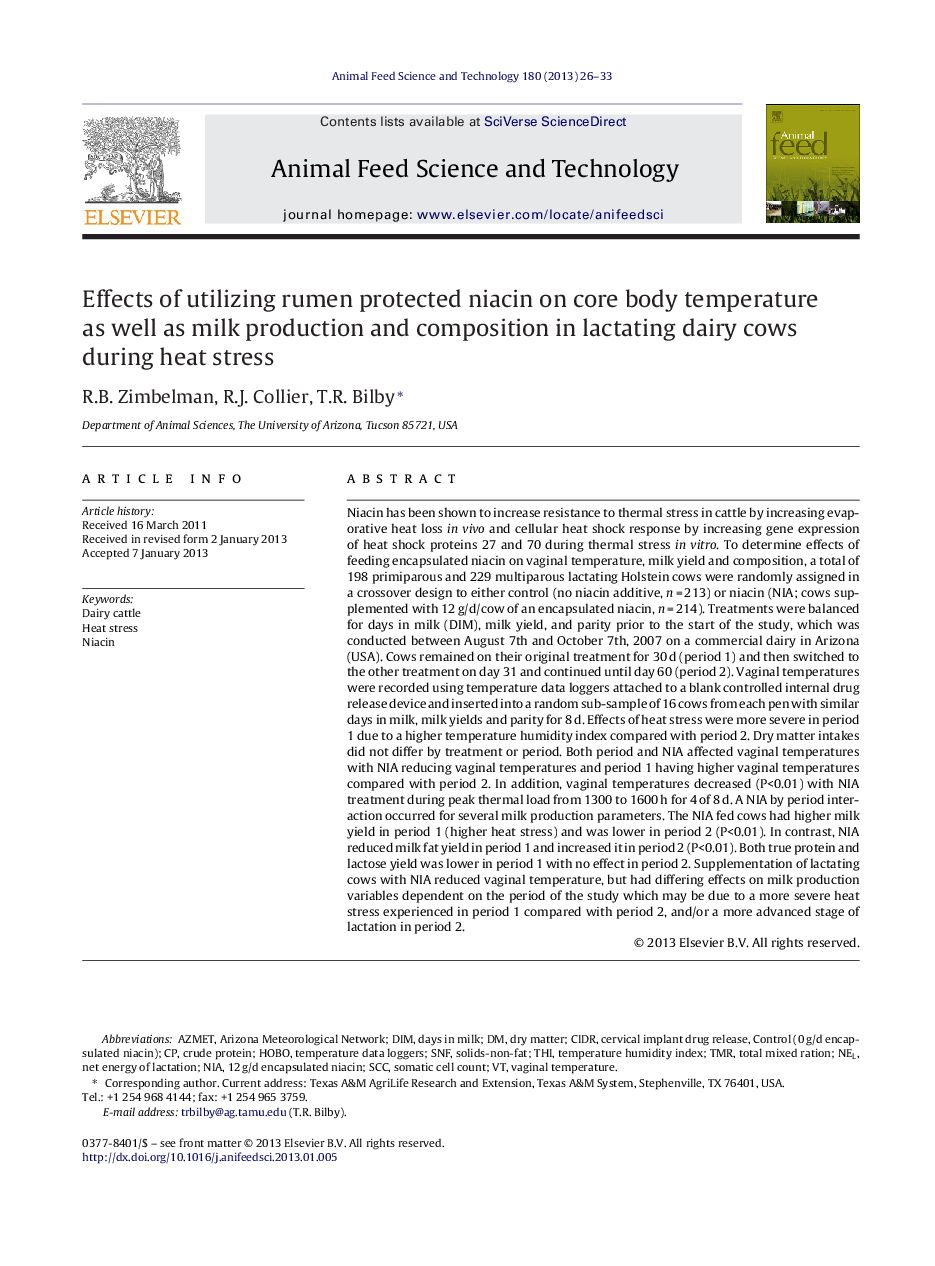| کد مقاله | کد نشریه | سال انتشار | مقاله انگلیسی | نسخه تمام متن |
|---|---|---|---|---|
| 8491974 | 1552408 | 2013 | 8 صفحه PDF | دانلود رایگان |
عنوان انگلیسی مقاله ISI
Effects of utilizing rumen protected niacin on core body temperature as well as milk production and composition in lactating dairy cows during heat stress
ترجمه فارسی عنوان
تأثیر استفاده از نیاسین تحت تاثیر شکمبه بر دمای بدن هسته و همچنین تولید و ترکیب شیر در گاوهای شیرده در طول استرس گرما
دانلود مقاله + سفارش ترجمه
دانلود مقاله ISI انگلیسی
رایگان برای ایرانیان
کلمات کلیدی
hoboSCCTMRSNFTHINIACIDRDIM - اذعانHeat stress - استرس گرماییSomatic cell count - تعداد سلول های سوماتیکNEL - درVaginal temperature - دمای واژنdays in milk - روز در شیرTemperature humidity index - شاخص رطوبت دماdry matter - ماده خشکNiacin - ویتامین B3، نیاسینcrude protein - پروتئین خامtotal mixed ration - کل جیره مخلوط شدهDairy cattle - گاو شیری
موضوعات مرتبط
علوم زیستی و بیوفناوری
علوم کشاورزی و بیولوژیک
علوم دامی و جانورشناسی
چکیده انگلیسی
Niacin has been shown to increase resistance to thermal stress in cattle by increasing evaporative heat loss in vivo and cellular heat shock response by increasing gene expression of heat shock proteins 27 and 70 during thermal stress in vitro. To determine effects of feeding encapsulated niacin on vaginal temperature, milk yield and composition, a total of 198 primiparous and 229 multiparous lactating Holstein cows were randomly assigned in a crossover design to either control (no niacin additive, n = 213) or niacin (NIA; cows supplemented with 12 g/d/cow of an encapsulated niacin, n = 214). Treatments were balanced for days in milk (DIM), milk yield, and parity prior to the start of the study, which was conducted between August 7th and October 7th, 2007 on a commercial dairy in Arizona (USA). Cows remained on their original treatment for 30 d (period 1) and then switched to the other treatment on day 31 and continued until day 60 (period 2). Vaginal temperatures were recorded using temperature data loggers attached to a blank controlled internal drug release device and inserted into a random sub-sample of 16 cows from each pen with similar days in milk, milk yields and parity for 8 d. Effects of heat stress were more severe in period 1 due to a higher temperature humidity index compared with period 2. Dry matter intakes did not differ by treatment or period. Both period and NIA affected vaginal temperatures with NIA reducing vaginal temperatures and period 1 having higher vaginal temperatures compared with period 2. In addition, vaginal temperatures decreased (P<0.01) with NIA treatment during peak thermal load from 1300 to 1600 h for 4 of 8 d. A NIA by period interaction occurred for several milk production parameters. The NIA fed cows had higher milk yield in period 1 (higher heat stress) and was lower in period 2 (P<0.01). In contrast, NIA reduced milk fat yield in period 1 and increased it in period 2 (P<0.01). Both true protein and lactose yield was lower in period 1 with no effect in period 2. Supplementation of lactating cows with NIA reduced vaginal temperature, but had differing effects on milk production variables dependent on the period of the study which may be due to a more severe heat stress experienced in period 1 compared with period 2, and/or a more advanced stage of lactation in period 2.
ناشر
Database: Elsevier - ScienceDirect (ساینس دایرکت)
Journal: Animal Feed Science and Technology - Volume 180, Issues 1â4, 15 March 2013, Pages 26-33
Journal: Animal Feed Science and Technology - Volume 180, Issues 1â4, 15 March 2013, Pages 26-33
نویسندگان
R.B. Zimbelman, R.J. Collier, T.R. Bilby,
